











| Nursery Web Spider (Pisaura mirabilis (Clerck, 1757)) |












|
|
Scientific name: Pisaura mirabilis (Clerck, 1757) Common name: Nursery Web Spider Other names: The name "Nursery web spider" can also be given to all the spiders of the Pisauridae family. French name: Pisaure admirable, Pisaure étonnante Order: Araneae Family: Pisauridae Size: 10-13 mm for males, 12-15 mm for females. Biotope: Meadows, low growing vegetation, gardens, sparse woodlands, hedgerows, heathlands. Web: No web, except a silk nursery web made by the female among high grasses to protect the spiderlings. Observation period: You can observe adults from May to August. Geographic area: All Europe, including the Mediterranean area and the East-Atlantic islands. |
The Nursery Web Spider is first noticeable by its slender and tapering abdomen. Its colour is variable from grey to dark brown even sometimes reddish or violet. The grey or brown cephalothorax shows a thin pale longitudinal line in the middle of a wide dark band. There are two pale lines on the external sides of the eyes. Males are similar to females but usually a little darker and smaller. The male brings a dead prey, wrapped in silk, as a gift before mating. The female carries the eggs inside a cocoon. It attaches the cocoon in low vegetation just before the spiderlings hatch out. She protects the cocoon and the spiderlings inside a bell-shaped nursery web until they are able to hunt by themselves. |
| [To know more about the Nursery Web Spider] [Next picture] [Top] |
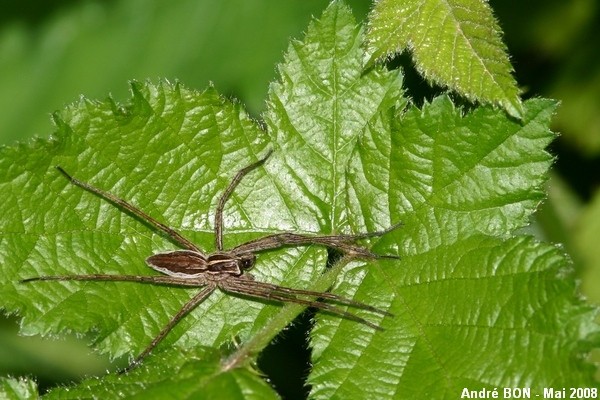
|
The shape of the abdomen and the pale line running in the middle of the cephalothorax confirm the identification. The marks on the abdomen are very variable from one spider to another. |
| [To know more about the Nursery Web Spider] [Next picture] [Previous picture] [Top] |

|
Here is a Nursery Web Spider with a paler colour. I have observed it in a clearing. |
| [To know more about the Nursery Web Spider] [Next picture] [Previous picture] [Top] |
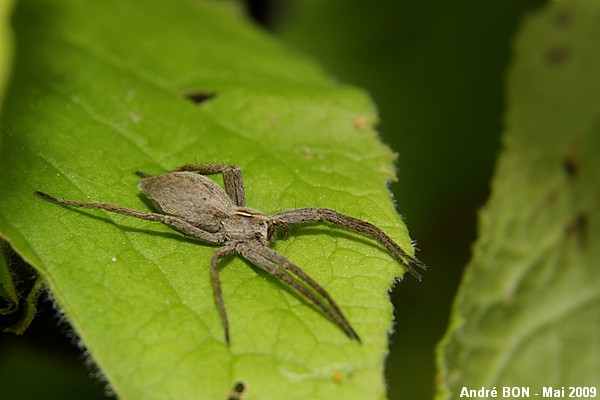
|
I often shoot macro pictures with manual focus. I first focus on the subject then I slowly move forwards and backwards several times. I shoot the picture as soon as the wanted detail appears sharp in the viewfinder. Subjects being so close, this often requires less than one millimetre precision. I still have to make progress. On this picture the focus plane is a little behind the eyes of the spider ... |
| [To know more about the Nursery Web Spider] [Next picture] [Previous picture] [Top] |
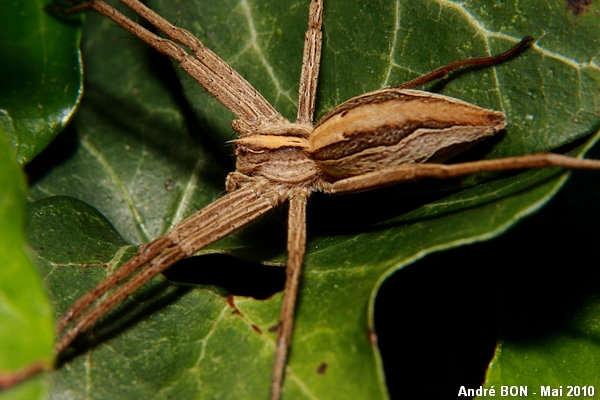
|
This Nursery Web Spider, sitting in wait for a prey on an ivy leaf, has been very kind to let me shoot a close-up view. |
| [To know more about the Nursery Web Spider] [Next picture] [Previous picture] [Top] |
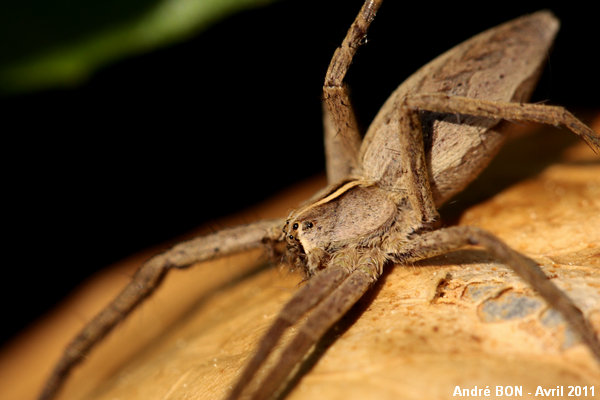
|
Same ivy than last year but on a dead leaf this times and a little closer. |
| [To know more about the Nursery Web Spider] [Next picture] [Previous picture] [Top] |
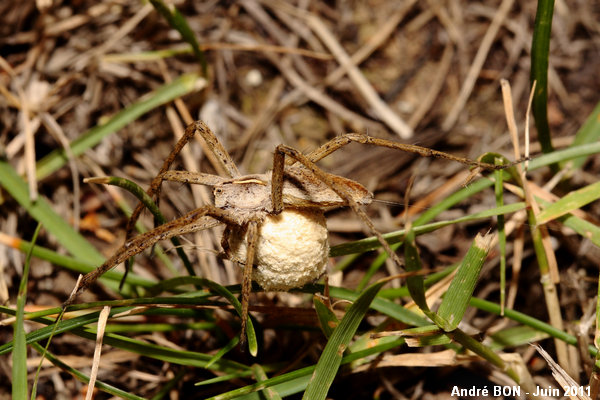
|
Here is one Nursery Web Spider carrying its cocoon. |
| [To know more about the Nursery Web Spider] [Next picture] [Previous picture] [Top] |
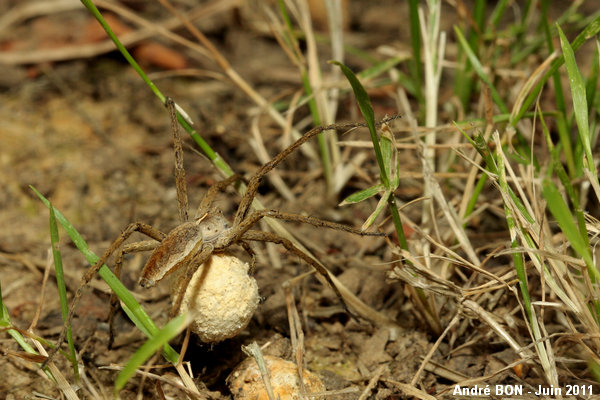
|
I have followed this Nursery Web Spider crossing the lawn, hoping to find a clear space for a better picture. I have not been able to do better than this picture. |
| [To know more about the Nursery Web Spider] [Next picture] [Previous picture] [Top] |
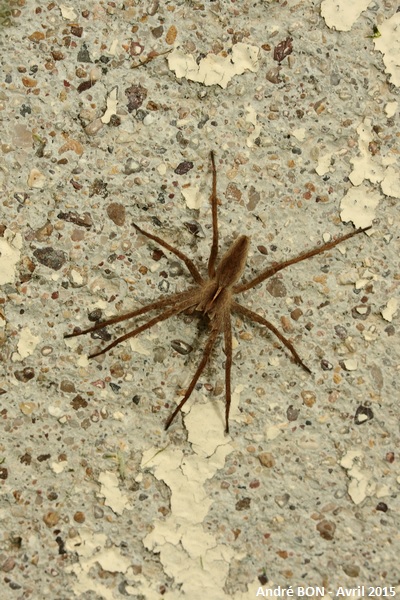
|
Is it the mowing of the lawn that disturbed this Nursery Web Spider? I found it sitting on the wall and its immobility allowed me to shoot the following close up picture. |
| [To know more about the Nursery Web Spider] [Next picture] [Previous picture] [Top] |
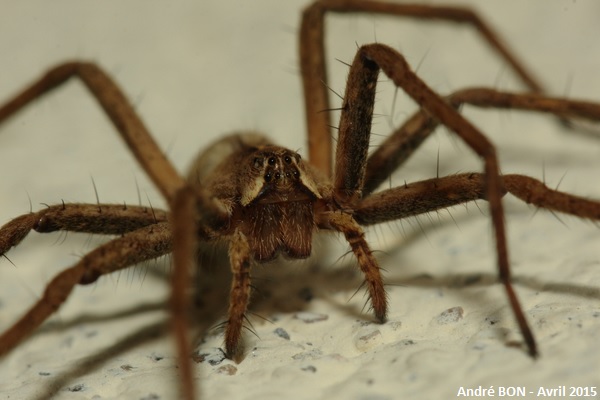
|
I try to gather a collection of close up pictures with front view of spiders. The goal is to illustrate a small key of families with the eye patterns. This photo is a small step towards the final result. |
| [To know more about the Nursery Web Spider] [Next picture] [Previous picture] [Top] |
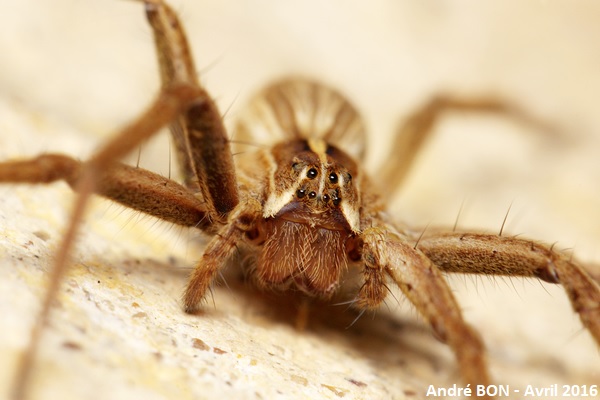
|
I am getting better results ;-) You just need to find a cooperative spider. |
| [To know more about the Nursery Web Spider] [Next picture] [Previous picture] [Top] |
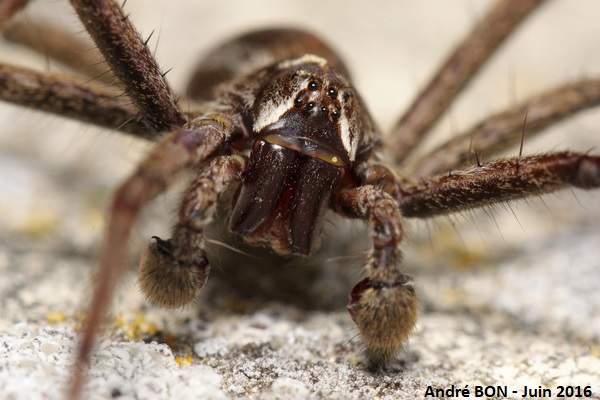
|
Here is another specimen even closer. |
| [To know more about the Nursery Web Spider] [Previous picture] [Top] |
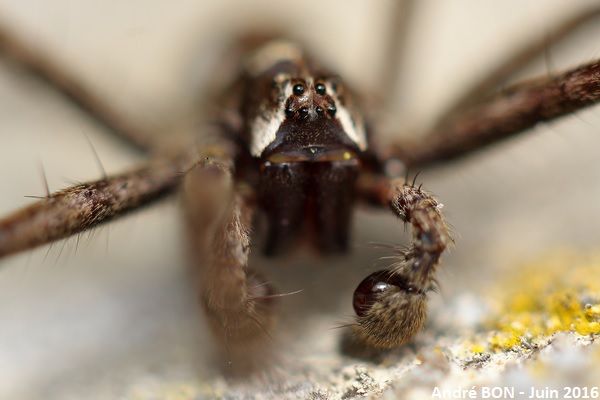
|
Another view of the same specimen with a short depth of field got by setting a large aperture. You can clearly see the row of 4 small anterior eyes, all of the same size, below and the pair of larger posterior median eyes above. The posterior lateral eyes are not in the plane of sharpness. |